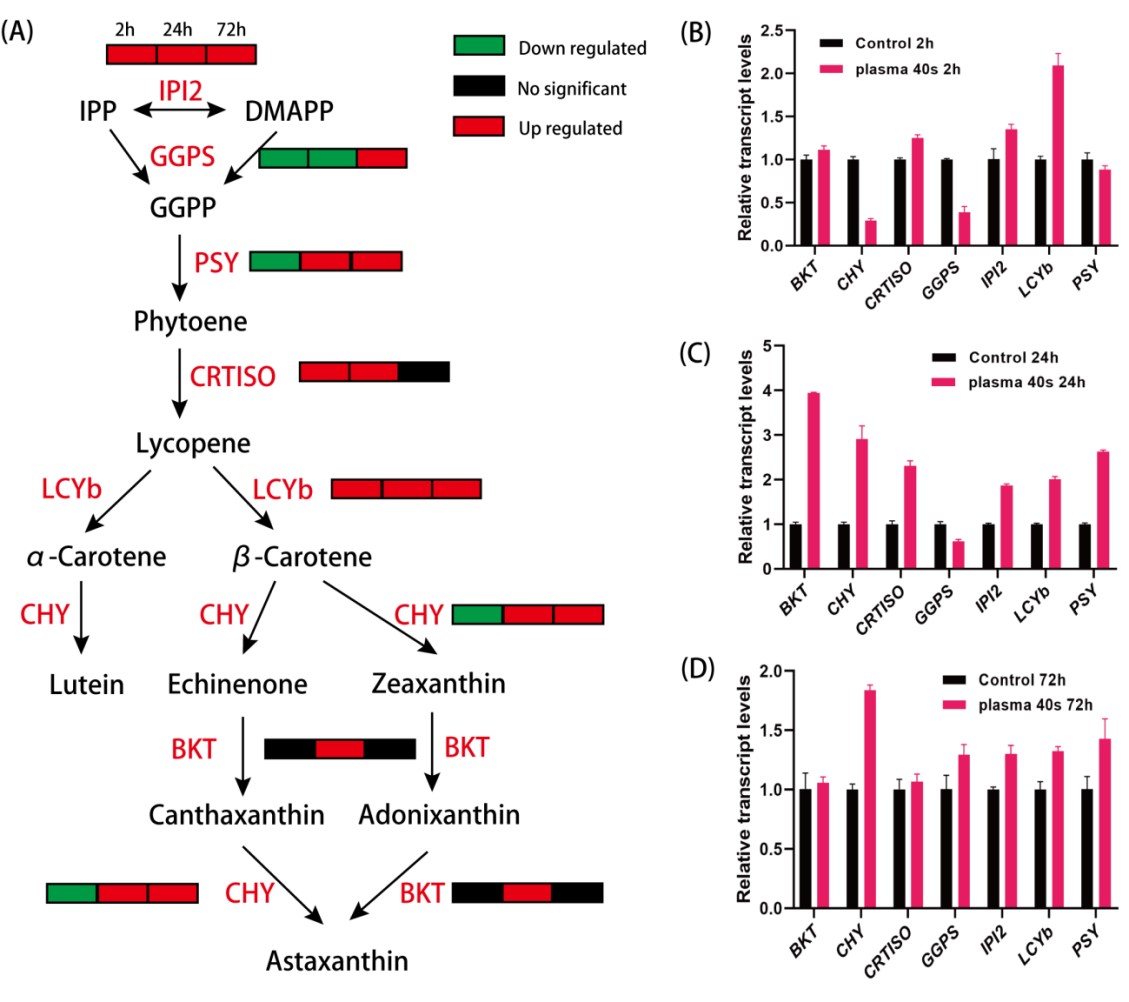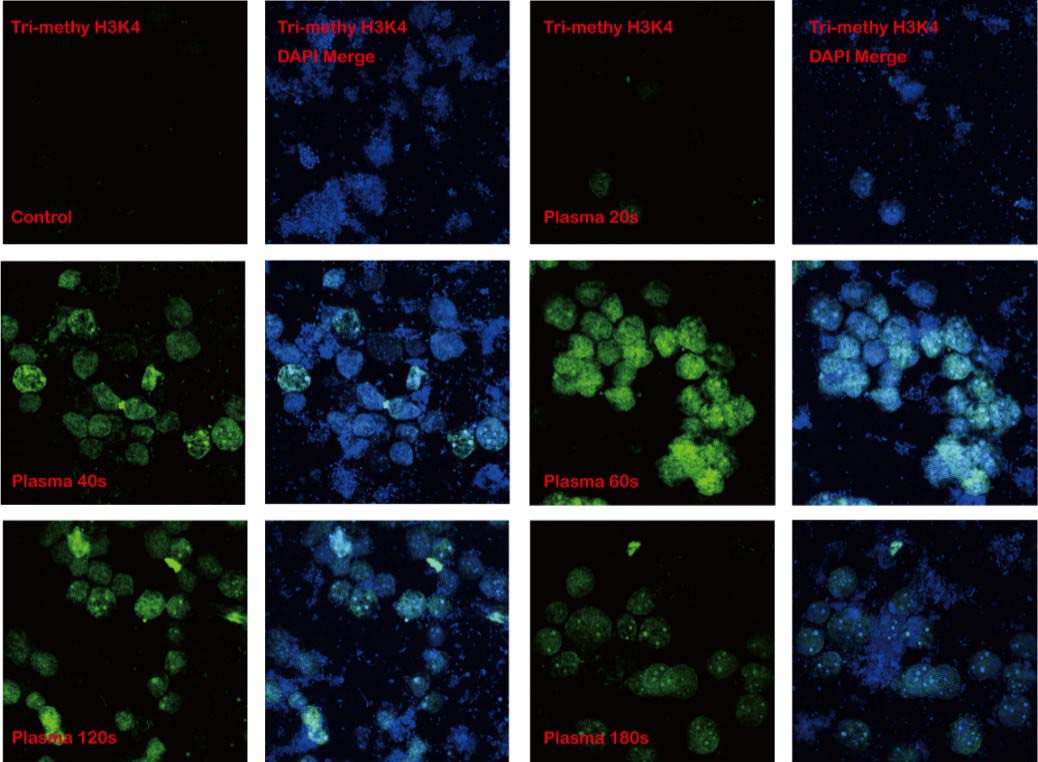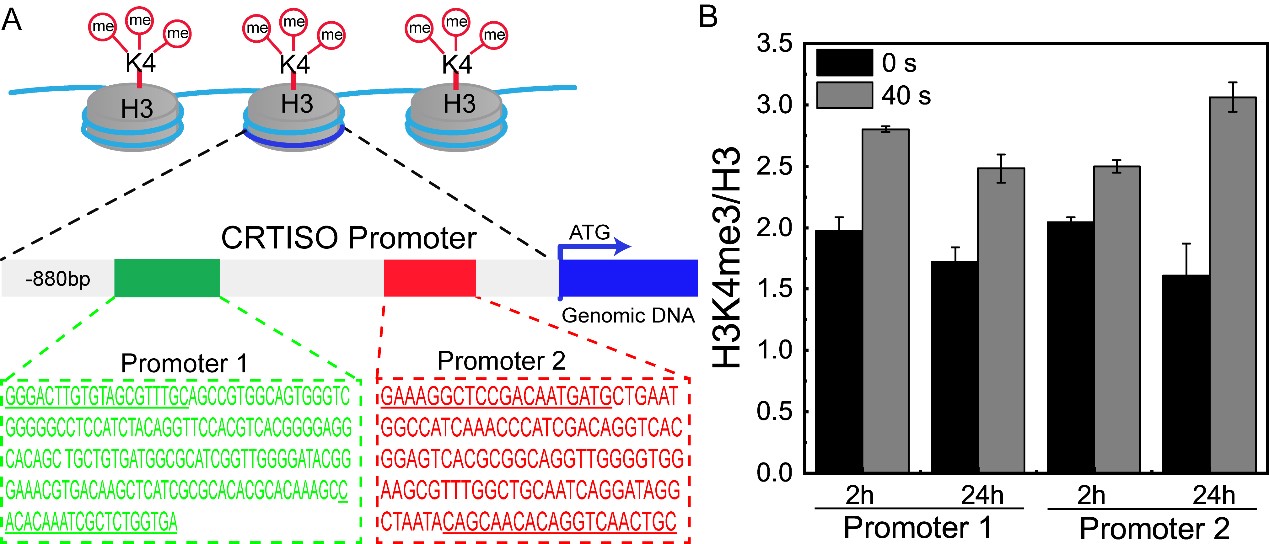
Haematococcus pluvialis (H. pluvialis) can produce natural astaxanthin which has strong antioxidant capacity. How to improve the astaxanthin content is a hot topic of current research.
Recently, a research group led by Prof. HUANG Qing from Hefei Institutes of Physical Science (HFIPS), Chinese Academy of Sciences revealed the epigenetic regulation mechanism of stimulated effect for astaxanthin accumulation in H. pluvialis treated by low-temperature plasma (LTP). The results were published in Bioresource technology.
"Previously, we showed that low-temperature plasma can stimulate the growth of H. pluvialis and astaxanthin accumulation," said Prof. HUANG, the team leader of this research, “but the mechanism remained unclear. Then, we were wondering if it was due to the epigenetic effect since we had no mutation in this case. So we initiated this study and the present work just verifies our hypothesis.”
After measuring hormones and transcriptional genes, the research group found that after LTP treatment, the levels of strigolactone (SLs) and abscisic acid (ABA) in algae increased significantly, and the expression of astaxanthin synthesis genes increased, especially one of the key genes CRTISO was specifically up-regulated. Through immunofluorescence experiment, they found that the fluorescence intensity of histone H3 lysine 4 trimethylation (H3K4me3) increased after plasma discharge treatment, indicating epigenetic changes. The ChIP PCR experiment further confirmed that the site of h3k4me3 was located in the promoter region of CRTISO, and the promoter expression was up-regulated.
"We conducted these experiments and confirmed that the plasma stimulation caused the increased expression of CRTISO by regulating H3K4me3, and so we have more accumulation of biomass and astaxanthin.” said LI Lamei, the co-first author of the paper.
This study therefore reveals a new mechanism of promoting algal growth and astaxanthin production from the perspective of epigenetics.
The research is supported by the National Natural Science Foundation of China.

Figure 1. Changes in gene expression related to astaxanthin synthesis induced by discharge plasma (Image by LI Lamei)

Figure 2. Histone methylation in algal cells induced by plasma (Image by LI Lamei)

Figure 3. Analysis of the effect of H3K4me3 on CRTISO promoter region (Image by LI Lamei)
Contact:
ZHAO Weiwei
Hefei Institutes of Physical Science (http://english.hf.cas.cn/)
Email: annyzhao@ipp.ac.cn